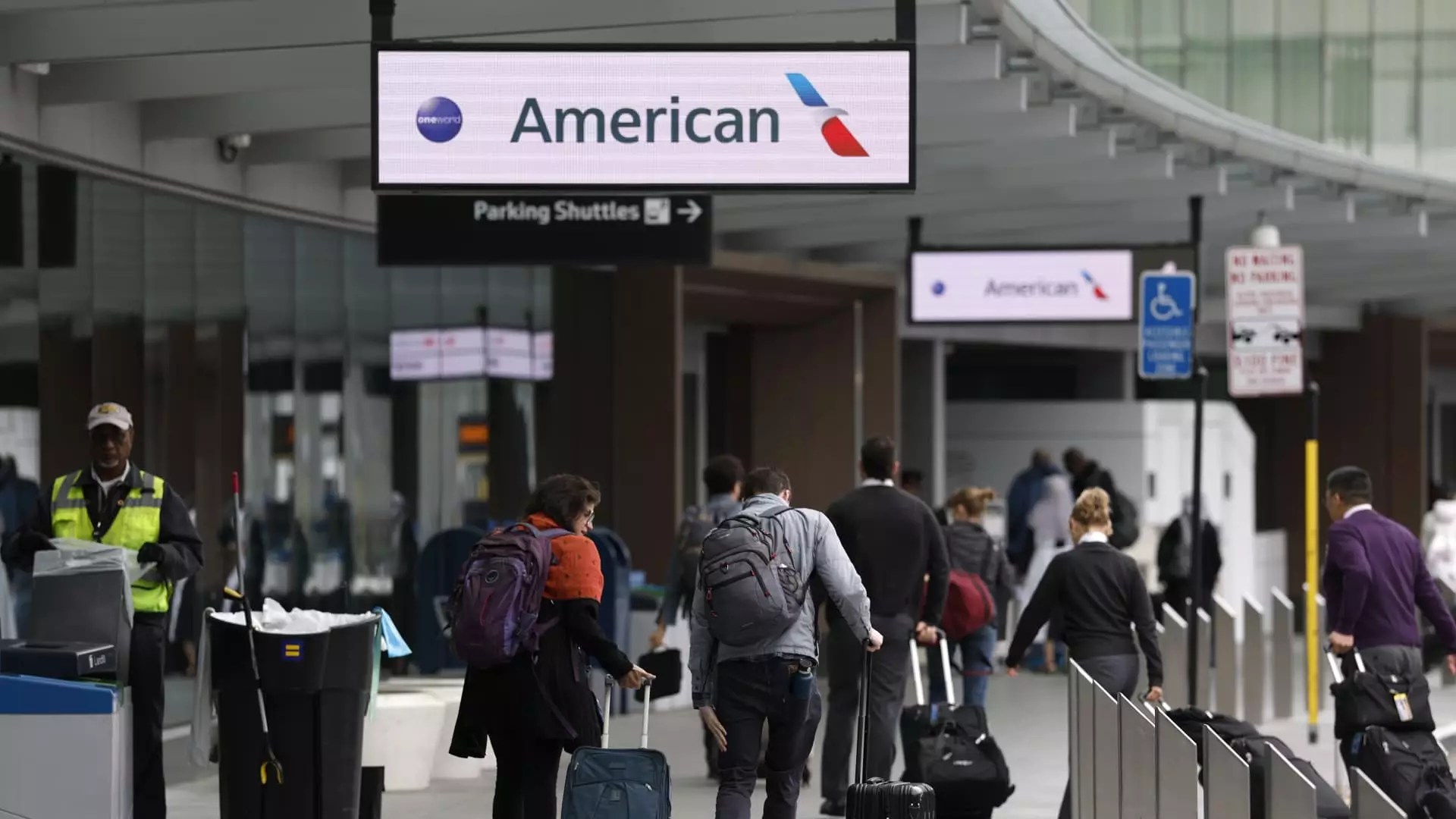As we dive into the evolving landscape of the airline industry, alarming signs are flashing that suggest economic turbulence may be around the corner. Airline CEOs recently expressed their worries during earnings calls, revealing a stark reality: passenger interest in domestic flights is waning considerably—much to their dismay. The initial ambitious forecasts set at the beginning of 2025 now appear overly optimistic in light of recent developments. Insights from experts indicate that these apprehensions stem not only from tumultuous political decisions, such as the unpredictable tariff policies enacted during the Trump administration, but also from broader economic uncertainties that affect consumer confidence.
American Airlines CEO Robert Isom articulated this sentiment poignantly, highlighting the hesitancy surrounding vacation planning during uncertain times. “Nobody really relishes uncertainty when they’re talking about spending hard-earned dollars,” he lamented. It is this very uncertainty that disrupts the travel industry, prompting airlines to reconsider their strategies in light of potential excess capacity coming to fore once again.
Capacity Cuts and Financial Forecasts
The ripple effects of shrinking demand are severe, leading major airlines such as Delta Air Lines, United Airlines, and Southwest Airlines to reconsider their growth strategies. In a proactive undertaking to manage the fallout, several carriers announced cuts to their capacity growth plans, reflecting the sobering reality that the summer travel boom may not be as robust as previously expected. Indeed, Delta, Southwest, and Alaska Airlines withdrew their projections for financial performance, acknowledging that the unpredictable state of the U.S. economy complicates their outlook.
United Airlines, in a fascinating twist, took a dual approach by providing two contrasting financial forecasts—one assuming the economy enters a recession and the other under typical conditions—demonstrating a pragmatic approach to forecasting. This speaks volumes about the uncertainty clouding the industry, as airlines cut back on capacity but simultaneously face steeper competition for the dwindling number of available passengers.
The Price of Uncertainty: Ticket Prices in Freefall
With an excess of empty seats and limited travel enthusiasm, airlines have begun to engage in aggressive pricing strategies. Recent data from the Bureau of Labor Statistics reveal that airfare dropped by 5.3% in March compared to last year, likely a direct response to the market’s volatility. Such price reductions may seem like a boon for consumers, but they highlight a growing concern within the industry—the failure to sustain peak demand, especially during significant travel seasons like Easter.
Corporate travel, which typically brings in revenue from less price-sensitive clients, mirrors the uncertainty plaguing personal travel. Analysts point to a flattening trend in corporate travel growth, which had been climbing at a promising 10% year-on-year in early 2025. The decline in business travel is especially worrisome for airlines that rely on such customers to fill the premium seats that command higher prices.
The Role of Government Travel and Business Dynamics
Another crucial factor contributing to the industry’s dilemma is the significant downturn in government travel, which can be traced back to austerity measures implemented during the Trump administration. The budget constraints have been particularly impactful, reducing governmental bookings and further exacerbating the excess capacity issue faced by airlines. It’s evident that the ripple effects of administrative actions have adverse consequences far beyond mere financial reporting, impacting levels of employment, service provision, and operational sustainability.
According to Conor Cunningham from Melius Research, uncertainty is the first element to disrupt corporate travel budgets. As companies grapple with market fluctuations, typically, the first line item to be curtailed is travel expenditures. The contrast between executives’ experiences in premium seating versus the general passenger sentiment amplifies this disparity, highlighting a dichotomy that could spell further trouble for the industry.
Restoring Certainty: The Path Forward
Despite these challenges, some industry executives maintain an optimistic outlook, emphasizing the belief that clarity and certainty will eventually restore consumer confidence in travel. Isom’s assertion that “certainty will restore the economy, and I think it will restore it pretty quickly” serves as a glimmer of hope in an otherwise disconcerting narrative. While airlines are cutting fares and adjusting growth strategies in a bid to adapt, the critical question remains: how long will this uncertainty persist before consumers rediscover the appetite for adventure, travel, and exploration?


Leave a Reply